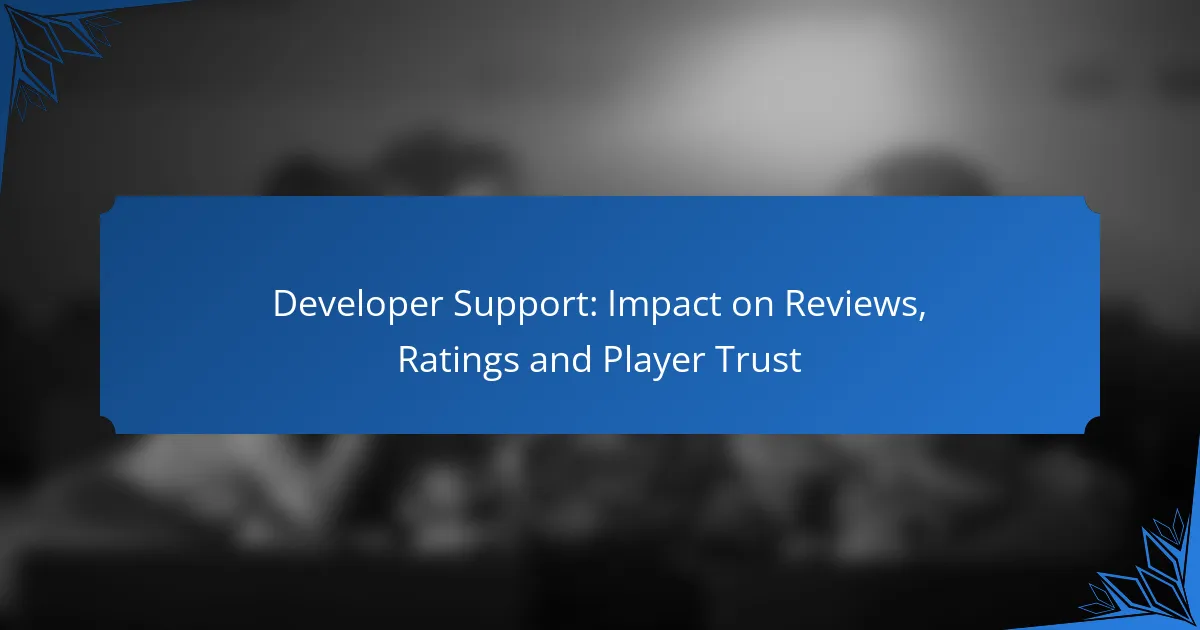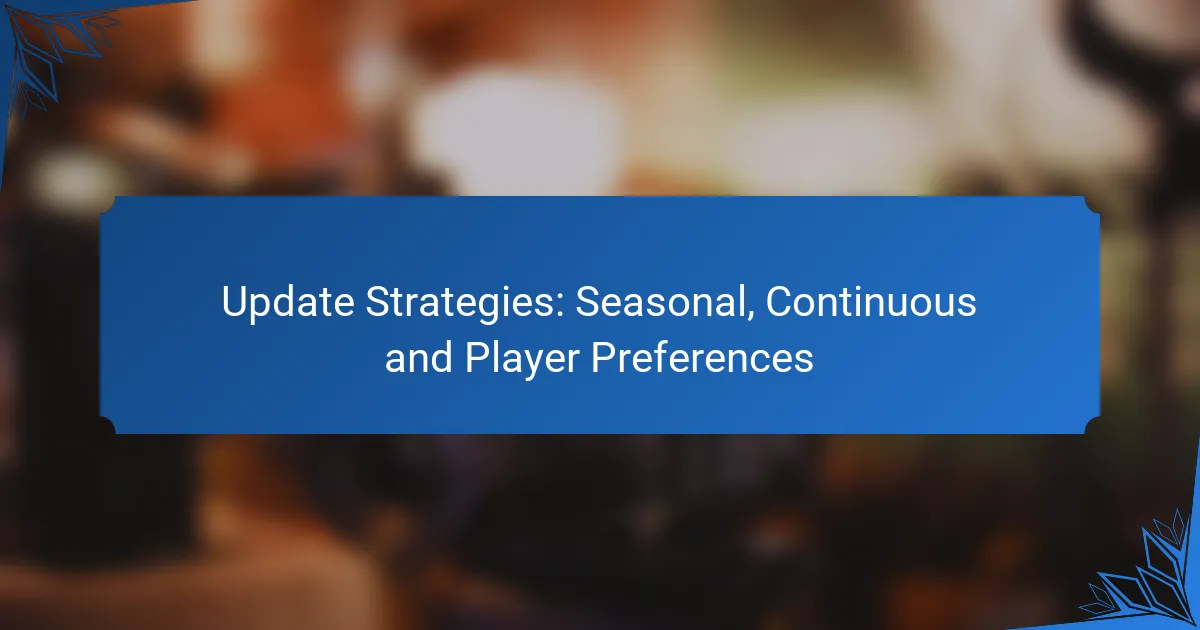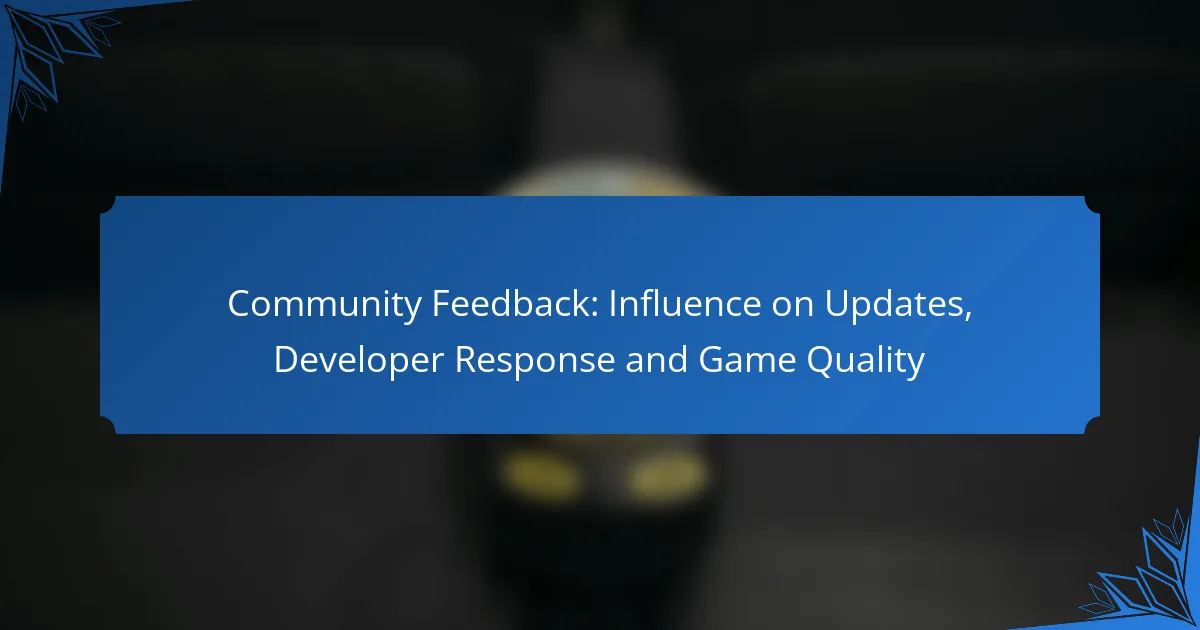Developer support plays a crucial role in shaping player trust and satisfaction, directly influencing game reviews and ratings. By fostering open communication and addressing player concerns promptly, developers can create a positive experience that encourages ongoing engagement. Conversely, inadequate support can lead to negative perceptions and feedback, highlighting the importance of effective support systems in the gaming industry.

How does developer support influence player trust?
Developer support significantly impacts player trust by fostering open communication, providing timely updates, and addressing player concerns effectively. When players feel supported, they are more likely to trust the developer and remain engaged with the game.
Direct communication enhances trust
Clear and direct communication from developers builds a strong foundation of trust with players. Regular updates through forums, social media, or in-game announcements help players feel informed and valued.
For example, developers who share insights about upcoming features or changes can create a sense of community and transparency. This openness encourages players to feel more connected to the game and its creators.
Timely updates improve player confidence
Providing timely updates is crucial for maintaining player confidence. When developers address bugs, balance issues, or player feedback quickly, it shows commitment to the game’s quality and player experience.
Frequent updates, even if they are small, can reassure players that the game is actively supported. A good practice is to aim for updates every few weeks, depending on the game’s complexity and player feedback.
Responsive support reduces frustration
Responsive support is essential for minimizing player frustration. When players encounter issues, having access to quick and effective support can significantly enhance their overall experience.
Developers should offer multiple support channels, such as live chat, email, or community forums, to cater to different player preferences. Aiming for response times within a few hours can greatly improve player satisfaction and trust in the developer’s commitment to their community.
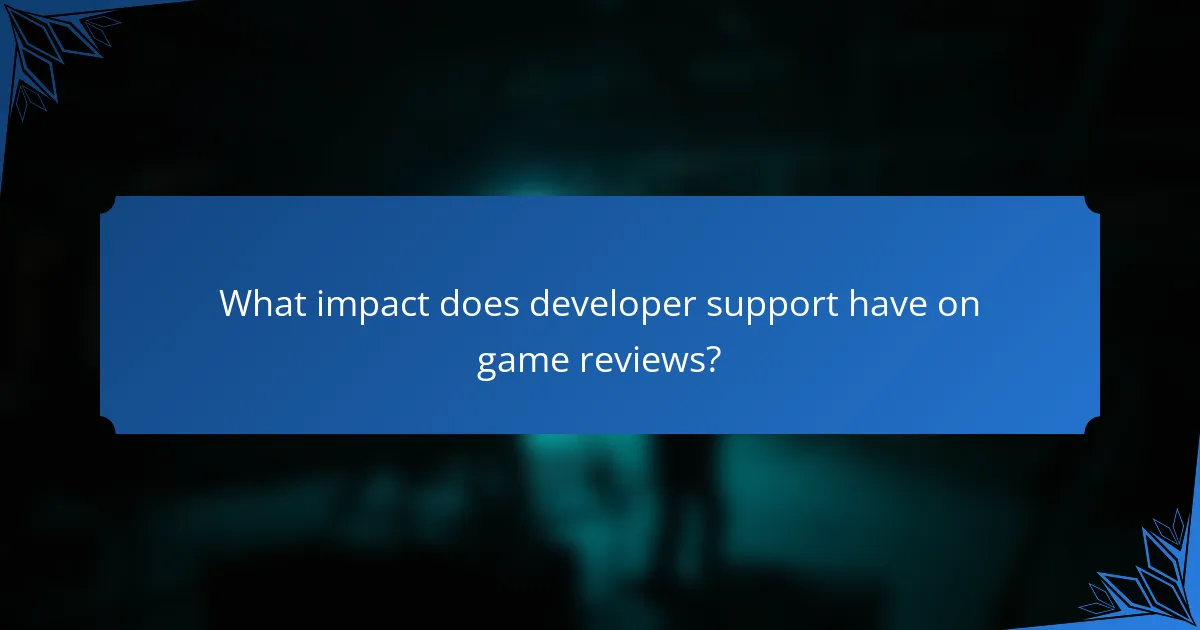
What impact does developer support have on game reviews?
Developer support significantly influences game reviews by shaping player experiences and perceptions. Effective communication and timely updates can enhance satisfaction, while poor support often leads to negative feedback.
Positive support leads to higher ratings
When developers actively engage with their player community, it often results in higher ratings. Players appreciate prompt responses to issues, regular updates, and transparency about game changes. For instance, games that receive consistent patches and improvements based on player feedback tend to see ratings increase by a notable margin.
Moreover, positive developer interactions can foster a loyal player base. Players are more likely to recommend games with strong support, which can lead to increased sales and a better overall reputation in the gaming community.
Negative experiences result in poor reviews
Conversely, inadequate developer support can lead to poor reviews and low ratings. Players who encounter unresolved bugs or lack of communication may express their frustration through negative feedback. This can significantly impact a game’s visibility and sales, especially in competitive markets.
Common pitfalls include ignoring player complaints or failing to address critical issues in a timely manner. Developers should prioritize responsiveness and transparency to mitigate the risk of negative reviews, as even a single unresolved issue can tarnish a game’s reputation.

How can developers improve their support systems?
Developers can enhance their support systems by implementing effective communication channels, gathering user feedback, and providing accessible resources. These strategies foster player trust and satisfaction, leading to better reviews and ratings.
Implementing live chat options
Live chat options allow players to receive immediate assistance, which can significantly improve their experience. By offering real-time support, developers can address issues as they arise, reducing frustration and enhancing player satisfaction.
When implementing live chat, consider using tools that integrate seamlessly with your existing platforms. Aim for response times within a few minutes to ensure players feel valued and heard.
Utilizing community forums for feedback
Community forums serve as a valuable resource for gathering player feedback and fostering a sense of community. By encouraging discussions, developers can gain insights into player needs and preferences, which can inform future updates and improvements.
To maximize the effectiveness of community forums, actively engage with players by responding to their posts and addressing concerns. Regularly highlight popular topics and suggestions to show that player input is taken seriously.
Offering comprehensive FAQs and guides
Providing comprehensive FAQs and guides can significantly reduce the volume of support requests by empowering players to find answers independently. Clear, well-organized resources help players navigate common issues and understand game mechanics.
Ensure that FAQs are regularly updated based on player inquiries and feedback. Consider including video tutorials or step-by-step guides to cater to different learning styles and enhance user understanding.

What are the best practices for developer communication?
Effective developer communication involves consistent updates and transparency, which are crucial for maintaining player trust and satisfaction. By implementing best practices, developers can positively influence reviews and ratings, ultimately enhancing the gaming experience.
Regular updates on game status
Regular updates on game status keep players informed about new features, bug fixes, and upcoming content. This communication can take the form of blog posts, social media announcements, or in-game notifications. Aim for updates at least once a month to maintain engagement and interest.
Consider using a content calendar to plan and schedule these updates. This ensures that players know when to expect news and helps developers stay organized. For example, a quarterly roadmap can outline major updates and improvements for the next few months.
Transparent handling of issues
Transparency in addressing issues builds trust between developers and players. When problems arise, promptly acknowledge them and provide clear information about the steps being taken to resolve them. This could include regular status updates on bug fixes or maintenance schedules.
Utilize platforms like forums or social media to communicate directly with players about ongoing issues. Encourage feedback and questions, and respond in a timely manner. This approach not only demonstrates accountability but also fosters a sense of community among players.
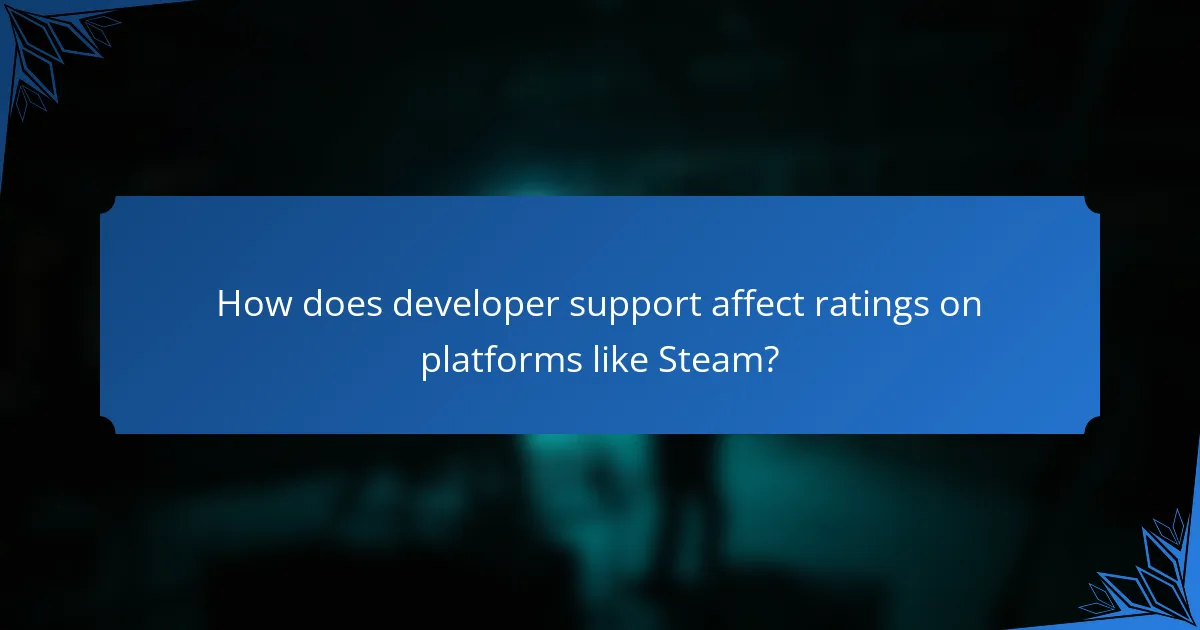
How does developer support affect ratings on platforms like Steam?
Developer support significantly influences ratings on platforms like Steam by directly impacting player satisfaction and trust. When developers actively engage with their community and address issues promptly, players are more likely to leave positive reviews and higher ratings.
High engagement correlates with better ratings
High levels of developer engagement often lead to improved ratings. When developers communicate regularly through updates, forums, or social media, players feel valued and heard. This connection can enhance player loyalty and encourage them to rate the game more favorably.
For instance, games that receive frequent updates or community events typically see a boost in their ratings. Players appreciate ongoing support and are more inclined to share their positive experiences, which can lead to a significant increase in overall ratings.
Support responsiveness impacts player reviews
The speed and quality of support responses can greatly affect player reviews. If players encounter issues and receive timely, helpful responses, they are more likely to leave positive feedback. Conversely, slow or unhelpful support can lead to frustration and negative reviews.
Developers should aim to respond to player inquiries within a few hours to a day, depending on the complexity of the issue. Implementing a ticketing system or a dedicated support team can streamline this process and improve player satisfaction, ultimately leading to better ratings.

What role does social media play in developer support?
Social media serves as a vital tool for developer support by enabling direct communication between developers and players. It facilitates real-time feedback, enhances player engagement, and fosters a sense of community around games.
Platforms for real-time interaction
Social media platforms like Twitter, Facebook, and Discord allow developers to interact with players instantly. These channels enable developers to address issues, share updates, and gather player feedback quickly, often within minutes. Utilizing these platforms can significantly improve response times and player satisfaction.
For example, a game developer might use Twitter to announce a patch and respond to player queries in real-time. This immediate interaction can help mitigate frustration and build a loyal player base.
Building community trust through transparency
Transparency in communication on social media helps build trust between developers and players. When developers openly share their development processes, challenges, and decisions, players feel more connected and valued. This openness can lead to increased player loyalty and positive reviews.
For instance, a developer might share behind-the-scenes content or explain the reasoning behind certain game mechanics. This level of engagement can turn casual players into advocates who support the game through word-of-mouth and social sharing.

How do player demographics influence support expectations?
Player demographics significantly shape support expectations, as different age groups and backgrounds often have distinct preferences and needs. Understanding these variations helps developers tailor their support strategies to enhance player satisfaction and trust.
Different age groups have varying needs
Younger players, typically in their teens and early twenties, often expect quick responses and are more comfortable using digital communication channels like chat and social media. They value immediate assistance and may become frustrated with delayed responses.
In contrast, older players may prefer more traditional support methods, such as email or phone calls, and might appreciate detailed explanations and step-by-step guidance. They often seek reassurance and clarity, especially when dealing with complex issues.
To effectively meet these diverse needs, developers should consider implementing multi-channel support options and tailoring their communication style based on the age demographics of their player base. Regularly gathering feedback can also help refine support strategies to better align with player expectations.
